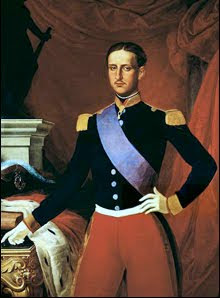Expanding the Search for PASSenger Manifests
 |
My father arrived in 1912 on the SS Berlin, later re-christened the SS Arabic
|
By Angelo F. Coniglio
I have detailed the type of information found on the ships’ manifests of Southern Italian immigrants to Ellis Island, documents that are available on the free site www.ellisisland.org. That site, one of the first to display manifests, can be very helpful, but it has its drawbacks. ellisisland.org sometimes maddeningly displays a manifest that clearly does not match the individual it says it is for. Also, though the site is free, printed copies of the manifests must be purchased from the Ellis Island – Statue of Liberty Foundation, unless you have screen-capture software and the skill to use it. As with all on-line sites, there are many errors in the spelling of names of persons and places. Another aspect of ellisisland.org that could be better is the ‘general search’ where you may want to get a list of all immigrants with a given surname or from a given town. ellisisland.org does not easily allow searches by town, and its general searches provide rather unwieldy lists that take time to navigate.
There are ways to get around these glitches. One is to use the site http://stevemorse.org/ellis/boat.html (known as the Steve Morse ‘white’ site). If you find a person’s name, date of immigration and ship of passage on ellisisland.org but it has the wrong manifest displayed, the ‘white’ site allows you to locate the correct manifest for a particular voyage of a particular ship, and search through it page by page for the passenger you want. This is tedious, but it can be effective.
 To obtain hard copies of manifests, the subscription site www.Ancestry.com allows not only ship manifests, but any record found there to be saved to your computer and printed out. Of course, ordinarily you must pay for the Ancestry.com service, but that can be avoided if you use the service at a public library or a Mormon FamilySearch Center.
To obtain hard copies of manifests, the subscription site www.Ancestry.com allows not only ship manifests, but any record found there to be saved to your computer and printed out. Of course, ordinarily you must pay for the Ancestry.com service, but that can be avoided if you use the service at a public library or a Mormon FamilySearch Center.
The persistent errors in spelling of names and places are not limited to ellisisland.org. However, what is misspelled on ellisisland.org may be spelled correctly (or at least, misspelled differently) on Ancestry.com, so a search that fails on one may be successful on the other. Before I subscribed to Ancestry.com, I had looked on ellisisland.org for weeks, without luck, for the manifest of my father-in-law Salvatore Bongiovanni. When I searched for it on Ancestry.com, I found it immediately. Then, using one of the other, simpler, names on his manifest, I searched for that name on ellisisland.org and discovered that my father-in-law’s surname had been indexed as Bougiovanni. Those of Italian heritage would probably recognize that there is no such surname as ‘Bougiovanni’, but the ellisisland.org indexer evidently mistook the hand written letter ‘n’ for a ‘u’.
An excellent site for general searches of passenger manifests is another Steven Morse site, known as his ‘gold’ site, at http://stevemorse.org/ellis2/ellisgold.html This site allows you to search for Ellis Island arrivals by one or all of the following, and more: first name; last name; ship name; town (including ‘sounds like’ and partial spellings); year of birth; and year of immigration. Once a list is obtained, it can be sorted by surname, year of birth, year of immigration, town of origin, etc. For example, my ancestral town, Serradifalco, is variously spelled on manifests as Terradifalco, Seradifoles, and so on. But I can search the ‘gold’ site for immigrants with the surname starting with the letters C-o-n-i-g who were born from 1885 – 1892, immigrated from 1910 – 1915, and came from a town whose name contained the string of letters ‘adif’. The result will be a list of anyone who fits that description. Selecting one from the list will transfer you to the ellisisland.org site.
Not every Southern Itallian immigrant came to America through Ellis Island. Firstly, Ellis Island did not start operation until 1892. Prior to that, New York City arrivals disembarked at a site known as Castle Garden. Secondly, numerous other ports besides New York were the landing places of immigrants. The foremost of these others were Boston and New Orleans, but they also found their way to the U. S. through Baltimore, Galveston, Philadelphia, and even San Francisco, as well as via some ports in Canada. Similarly, passengers whose final destination was Canada may have first landed at a U. S. port. Lists of Canadian – U. S. border crossings also exist. I’ll discuss these other ports and possibilities in future columns.
Coniglio is the author of the book The Lady of the Wheel, inspired by his Sicilian research. Order the paperback or the Kindle version ay http://bit.ly/SicilianStory. Coniglio’s web page at http://bit.ly/AFCGen has helpful hints on genealogic research. If you have genealogy questions, or would like him to lecture to your club or group, e-mail him at genealogytips@aol.com








